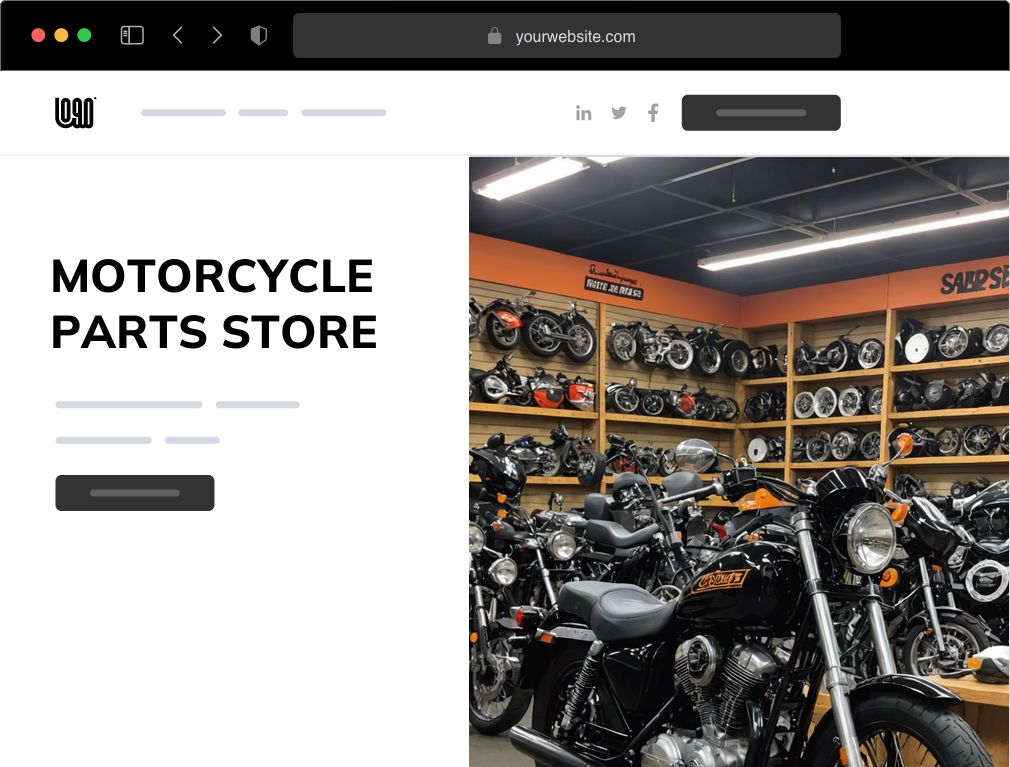Your Go-To Motorbike Shop for Quality Parts and Accessories
Your Go-To Motorbike Shop for Quality Parts and Accessories
Blog Article
Understanding the Crucial Parts of a Motorcycle: A Comprehensive Overview for Enthusiasts
For motorbike fanatics wanting to boost their riding experience and guarantee their bikes run efficiently, comprehending the crucial components of a motorbike is extremely important. Each element, from the engine's complex operations to the important duty of the braking devices, not just affects performance yet additionally security and comfort. This overview will certainly walk through the essential parts that every motorcyclist need to know with, allowing notified options in both upkeep and possible upgrades. As we start this expedition, one must ask: just how does each part interact to create the seamless ride every enthusiast seeks?
Engine Parts

The camshaft plays an important role in regulating the timing of the engine's shutoffs, guaranteeing the specific opening and closing required for reliable fuel and air consumption, along with exhaust expulsion. This timing is vital to preserving optimum engine efficiency and efficiency. Furthermore, the carburetor or gas shot system, depending on the motorbike version, is responsible for mixing air with gas in the proper proportion for combustion.
The air conditioning system, either air or liquid-based, works to preserve the engine's temperature level within operational limits, avoiding getting too hot and ensuring durability - mx parts nz. Each part, carefully developed and integrated, adds to the smooth operation of the engine, specifying the bike's power output and total performance
Transmission System
Indispensable to the motorcycle's performance, the transmission system makes sure effective power transfer from the engine to the wheels. This system comprises a number of critical components, consisting of the clutch, transmission, and last drive, each playing an important function in equating the engine's power into activity. The clutch, commonly operated by a hand lever, serves to disengage the engine and involve from the transmission, enabling smooth gear modifications and regulated velocity.
The gearbox, typically referred to as the transmission correct, contains a set of gears that cyclists can by hand shift via to readjust the bike's rate and torque outcome. These gears are arranged in a sequence that enables the motorcycle to accelerate smoothly and maintain ideal engine performance across various speeds. Many motorcycles make use of a sequential transmission, needing the motorcyclist to move equipments in an established order.
Braking Devices
While comprehending the transmission system is essential to using a bike's power, equally vital is the ability to regulate and stop that power successfully, which is where braking systems come right into play. Brakes are important for safety and security and performance, offering the biker with the essential control to navigate different surfaces and problems. Typically, bikes include 2 kinds of stopping systems: disc brakes and drum brakes.
Disc brakes are a lot more common in contemporary motorbikes due to their exceptional efficiency. This system provides better warmth dissipation, constant efficiency, and improved quiting power, especially in damp conditions.
Conversely, drum brakes, though less common, are still located in some bikes. They work by pushing brake shoes versus the internal surface of a drum affixed to the wheel. While typically less effective in heat dissipation and stopping power, drum brakes are easier and extra economical.
Understanding these braking systems' nuances find permits motorcyclists to keep their bikes properly and appreciate the design that guarantees efficient and secure quiting.
Suspension and Guiding
Suspension and guiding systems are important components that substantially influence a motorcycle's handling and adventure convenience. The shock absorber, including forks at the front and shock absorbers at the rear, absorbs road abnormalities, improving stability and control. Front forks, upside down or commonly telescopic, compress and rebound to minimize influences, while back shock absorbers keep tire contact with the road, essential for grip and security.
Guiding, centered around the handlebars, connects the biker to the motorcycle's directional control. The guiding head bearings make certain smooth operation, enabling exact ability to move. Appropriate placement and maintenance of these bearings are important for predictable steering feedback and minimizing rider fatigue.
The suspension's adjustability is another important aspect; preload, damping, and rebound setups allow personalization to match various riding conditions and styles. This versatility is essential for enhancing efficiency, whether browsing city roads or dealing with rugged trails. Technologies like digital shock absorber provide real-time adjustments, boosting trip top quality across varied terrains.

Electric Systems
After making certain a regulated and smooth trip via efficient suspension and steering systems, interest turns to the electrical systems, a critical element of contemporary bikes. These systems play a vital role not just in beginning the engine but likewise in powering different parts that enhance the capability and safety and security of the motorcycle.
At the heart of a motorbike's electric system is the battery, which shops electrical energy essential for starting the engine and powering auxiliary systems - motorcycle shop. The alternator or generator, combined with the rectifier-regulator, makes certain the battery remains charged while the motorcycle functions, transforming mechanical power right into electric power and maintaining voltage levels
The ignition system, another important part, is accountable for igniting the air-fuel mixture in the engine's cylinders. Modern motorcycles typically make use of a digital ignition system, supplying better efficiency and reliability compared to conventional systems.
Illumination systems, including navigate to this site headlights, tail lights, and signs, are likewise important, making sure exposure and safety and security for the cyclist. Additional why not look here digital parts such as sensing units, control systems, and shows add to advanced features like fuel shot monitoring, anti-lock stopping systems (ABDOMINAL), and digital dashboards, better boosting the riding experience.
Conclusion
An extensive comprehension of a bike's necessary elements, consisting of the engine, transmission system, braking mechanisms, suspension, guiding, and electrical systems, is crucial for lovers aiming to enhance performance, comfort, and safety and security. Mastery of these components enables for educated decisions relating to upkeep and upgrades, eventually boosting the riding experience. By integrating this understanding, cyclists can ensure their motorbikes run at peak effectiveness and integrity, thus maximizing both pleasure and long life of their cars.
For bike enthusiasts looking to raise their riding experience and guarantee their bikes run efficiently, comprehending the crucial components of a motorbike is extremely important.Essential to the bike's functionality, the transmission system makes certain efficient power transfer from the engine to the wheels.While comprehending the transmission system is key to taking advantage of a bike's power, just as important is the capability to regulate and stop that power successfully, which is where braking mechanisms come into play. Commonly, motorcycles feature 2 kinds of braking systems: disc brakes and drum brakes.
A thorough comprehension of a motorcycle's vital elements, including the engine, transmission system, braking systems, suspension, steering, and electrical systems, is important for lovers aiming to enhance comfort, safety and security, and efficiency.
Report this page